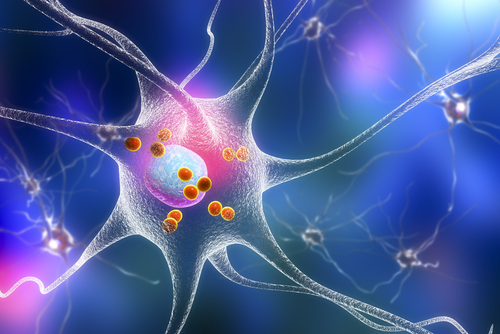Impaired RNA Quality Control May Underlie Neurodegeneration in People with C9orf72 Mutations

An impairment in the activity of the RNA exosome complex, which cells use to degrade defective RNA molecules, could contribute to amyotrophic lateral sclerosis (ALS) caused by mutations in the C9orf72 gene, a new study indicates.
The study, “The RNA exosome complex degrades expanded hexanucleotide repeat RNA in C9orf72 FTLD/ALS,” was published in The EMBO Journal.
Mutations in C9orf72 are the most common genetic cause of ALS, accounting for up to 40% of familial ALS cases and 7% of sporadic ALS cases. They also are frequently involved in the related condition frontotemporal lobar degeneration (FTLD).
These mutations are typically repeat expansions in C9orf72, where a sequence of six DNA building blocks — the letters GGGGCC — are repeated over and over again in the gene.
This leads to the production of repeat RNA molecules, which provide the instructions to make repeat-containing proteins, called dipeptide repeat proteins (DPRs). Both the repeat RNA and the DPRs accumulate in cells, which is thought to be toxic and ultimately drive disease. However, the molecular mechanisms by which repeat RNA accumulates in cells with mutant C9orf72 haven’t been fully worked out.
In the new study, researchers at Osaka University examined the role of the RNA exosome complex in this process. This complex is a molecular machinery involved in regulating RNA, namely the elimination of defective RNA molecules.
Using cell models containing repeat expansion C9orf72, the researchers first tested the effect of changing the activity of the RNA exosome complex by manipulating a key complex protein called EXOSC10. When the researchers experimentally decreased EXOSC10 levels — thus decreasing activity of the complex — levels of repeat RNA and DPRs increased. Conversely, when EXOSC10 levels were increased, repeat RNA and DPR levels decreased.
Additional cellular and molecular assays showed similar findings. Of note, when repeat expansion C9orf72 is transcribed, the gene can be “read” in either direction. This can result in one of two repeat RNAs being generated, referred to as sense and antisense. ESOSC10 manipulation had similar effects on both repeat RNAs.
“Together, these results suggest that EXOSC10 is a significant determinant for repeat RNA metabolism and thus for DPR expression in our cellular model of C9orf72 repeat expansion,” the researchers wrote. “EXOSC10 contributes to the degradation of C9orf72 sense and antisense repeat RNA.”
The researchers performed similar experiments in cells derived from three patients with C9orf72 mutations, and got similar results: increasing ESOSC10 levels decreased repeat RNA levels, and vice versa.
“These results suggest that EXOSC10 contributes to the metabolism of disease‐associated sense and antisense repeat RNA … in C9orf72 patient‐derived cells,” the researchers wrote.
Under normal physiological conditions, EXOSC10 is located in the nucleus, the cellular compartment where DNA is housed. The proper cellular location is necessary for the protein to function properly.
But researchers found that certain DPRs — especially those rich in the amino acid arginine — could bind to EXOSC10 and disrupt its localization within cells. This reduced the activity of the RNA exosome complex as a whole, as evidenced by elevated levels of RNA molecules that normally would be degraded by the complex.
“Together, these results indicate that arginine‐rich DPR impedes C9orf72 repeat RNA metabolism through the inhibition of EXOSC10/the RNA exosome complex,” the researchers concluded.
Collectively, these findings are indicative of a cycle wherein DPRs inhibit the activity of the RNA exosome complex, which leads to the production of more repeat RNAs and more DPRs, which further inhibit the complex.
“The RNA exosome works to degrade the defective RNA until it becomes swamped by inhibitory effects of the toxic proteins, initiating a downward spiral that may exacerbate neurodegeneration in C9orf72-associated FTLD/ALS,” Yuya Kawabe, study lead author, said in a press release.
This implies that therapies aiming to increase the activity of the RNA exosome may counteract this effect and, as such, have therapeutic utility in ALS/FTLD caused by mutant C9orf7.
“Repeat RNA can be toxic itself and is the source of highly toxic protein. So reducing repeat RNA could be a therapeutic option in FTLD/ALS caused by this genetic abnormality,” said study author Kohji Mori.






